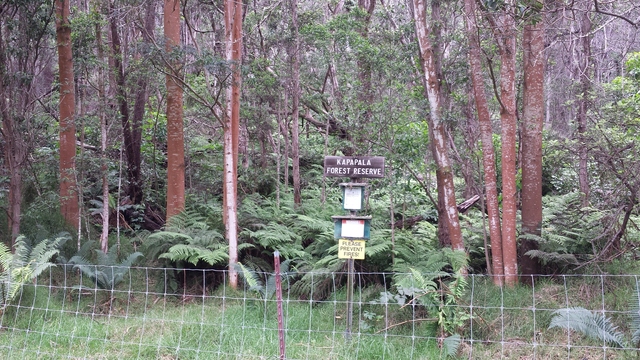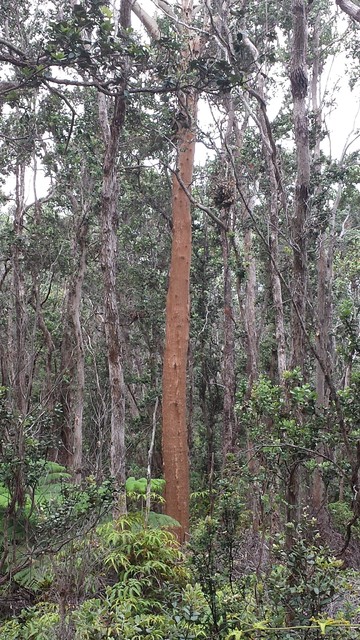HILO — Even as environmental groups, private landowners and state agencies work to restore and replant Hawaii’s native forests, management of existing resources remains a key component of future planning. ADVERTISING HILO — Even as environmental groups, private landowners and
HILO — Even as environmental groups, private landowners and state agencies work to restore and replant Hawaii’s native forests, management of existing resources remains a key component of future planning.
That’s particularly true of koa, the largest native tree species found on the islands. Considered a “nurse tree” species because its presence creates an environment that helps other native species — from smaller plants to insects and birds — thrive, koa also is harvested for commercial and cultural purposes.
“To me it’s always been the win-win-win species,” said Katie Friday, Pacific Islands Forest Stewardship and Legacy Program manager with the U.S. Forest Service. “It has economic value, it has cultural value and it has environmental value.”
A January 2015 report prepared by Paauilo-based Forest Solutions Inc. concluded that “managing the species for habitat conservation, long-term Hawaiian cultural usage and high-value timber production can be a realistic goal, but will require accurately assessing the current state of the resource.”
Several koa-oriented initiatives are ongoing on the Big Island, including breeding disease-resistant trees and helping private landowners develop best practices for managing their own acreage. Koa reforestation at Hakalau Forest National Wildlife Refuge has been “a major success story,” Friday said.
One ongoing Department of Land and Natural Resources project in Ka‘u combines all three of koa’s “wins.”
The DLNR’s Division of Forestry and Wildlife, along with partners such as Forest Solutions and the Three Mountain Alliance watershed group, has been developing a draft management plan for the area known as the Kapapala Koa Canoe Forest for the past three years.
The land, located on Mauna Loa’s southeastern slope, comprises more than 1,200 acres adjacent to the Kapapala Forest Reserve and the Ka‘u Forest Reserve, that together form one of the largest stands of native forest in the state — about 100,000 acres.
As its name implies (koa wood is used to make traditional outrigger canoes), the canoe forest has “quite a number of quite large trees,” Friday said, making it “an almost unique resource.”
The draft plan, expected to be complete at the end of this month, seeks to preserve and use that resource.
“Kapapala Koa Canoe Forest will one day be able to supply sustainable koa for use in canoes, as well as provide a healthy, regenerating forest supporting other native species and the surrounding community,” DLNR public information officer Deborah Ward said in an email.
The land is the DLNR’s “only officially recognized forest for the development of koa canoe resources,” she said.
The coordinating groups are still developing budgetary needs for the project, Ward said, and will first look at ways to improve overall visitor access and safety.
A youth education plan has been part of the canoe forest initiative from the outset, in the hopes that kids from Ka‘u and around the island will be able to learn more about the area’s ecology and history. The plan also will involve students at the University of Hawaii at Hilo and Hawaii Community College.
Three Mountain Alliance already has embarked on some educational efforts at Kapapala, incorporating classroom presentations and site visits to the group’s work at the Volcano School of Arts and Sciences and Ka‘u High School, as well as its own Imi Pono no ka Aina environmental program.
Once the final plan is complete, Kapapala will be able to serve as a model for public and private koa management by “providing an area where people can come and learn about management of a native Hawaiian forest,” Ward said.
“That’s one way to sustainably have some logs coming off (the land), to support the use of koa,” Friday said.




